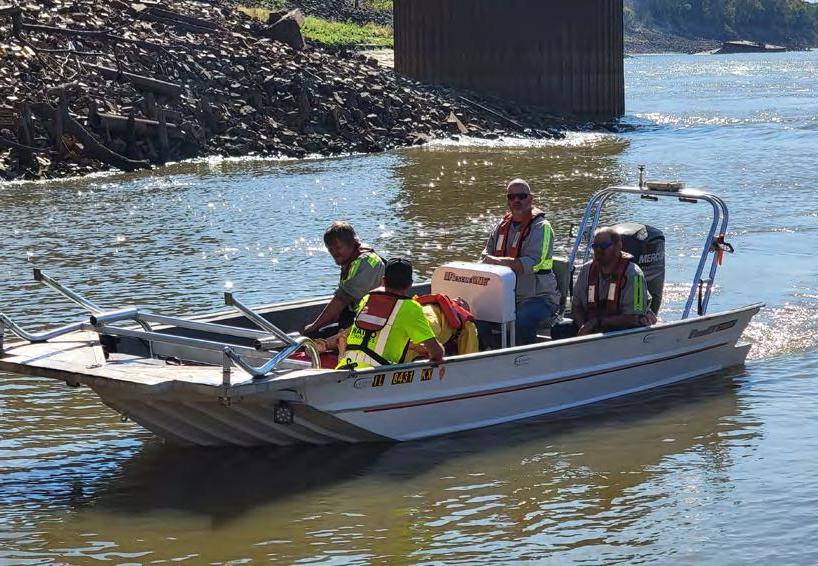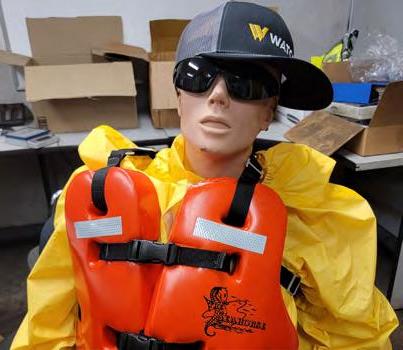
3 minute read
Watco Offers Water Rescue Training
Watco operates marine terminals and ports on the shores of America’s waterways, lakes, and coasts. Moving freight by barge and vessel is one of the most economical and efficient means to do so, but it comes with an additional safety hazard: water. That’s why the Watco Terminal & Ports Operations and Safety teams collaborated to ensure our marine terminals have both the water rescue boats and the training needed to operate these vessels.
From conception to implementation, it takes time to formalize any water training program. Safety Manager Tim Sharitt was a marine terminal manager in Alabama when he helped introduce rescue water training program to Watco. He along with other leaders met to discuss the need for rescue capabilities and training.
“Others in the industry were having man-overboard issues, and a couple had lost people. So, in true Watco fashion, terminal managers got together, looked at the regulations, and discussed what we could do to ensure that didn’t happen to our team,” Sharitt said.
Under current regulations, terminals are not required to have a rescue boat on-site.
“We said, ‘That doesn’t mean we can’t go above and beyond to protect our team, or to assist in case a customer or contractor does go in (to the water),’” said Sharitt. “We started putting it all together, got approval for the rescue boats, and then realized we didn’t have training to use them.”

Sharitt’s previous experience helped solve for this. As a former first responder, he performed water rescues, and had worked with a boat manufacturer during that time. The Watco team, including Safety Managers Jordan Vasquez and Matt Machell, worked with this company to supply our terminals with boats, storage/launching facilities, and develop the training program.
The training begins in the classroom with a job safety analysis to identify the hazards each team could face. Then, they identify the roles each person will play in the exercise and simulate a rescue.
Later, they implement their classroom training with a life-size dummy during an in-water rescue. They practice how to grasp the person in the water, whether they are conscious or not, how to put a floating backboard under someone if they are injured, and how to get them into a safe place in the bow of the boat.
“It has to be a well-oiled machine. The team has to agree to trust the captain and each other to do the right thing, and they need to know how to do it in waters as rough as the Mississippi River,” Sharitt said.
He’s traveled across our waterway network leading this training. Sharitt also provides CPR and first-aid courses.
“I thoroughly enjoy what I do. I like to see the different atmospheres of different locations and learn the unique challenges they face, and then show them how to overcome them,” Sharitt said.
His training has already yielded benefits. The Vicksburg, Mississippi, team had no issues during the recent retrieval of a team member who fell off a barge.
The rescue boats have benefits beyond helping team members as well. Some locations use them to inspect docks, sea walls, and boats because they are easily maneuverable. However, the focus is our team and customers’ safety.
“Mr. Sharitt’s training and teaching style are second to none,” said Osceola (Arkansas) Marine Terminal Superintendent of Rail Operations Stefanie Gentles, who recently went through Sharitt’s training. “The skills he is teaching are not only useful in our facilities but can be used as life-long skills outside of our jobs. He empowers our teams to recognize hazards, allowing us to prevent accidents and injuries.”








